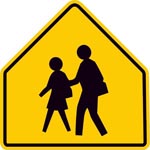Children, Youth, Families, and Schools, Nebraska Center for Research on
ORCID IDs
Document Type
Article
Date of this Version
7-2010
Abstract
Clinical members of AAMFT were solicited by means of a randomized multi-staged clustering technique to identify their attitudes and beliefs regarding psychotropic drugs. All participants were blind to the overall purpose of the study (n = 322) and were directed to read a clinical vignette and then identify what course of action they would take with the client. They were then asked to complete a small questionnaire regarding their attitudes and beliefs regarding psychotropic drugs. Results of the study showed that 35.7% of the clinicians identified medication and a medication referral as a viable treatment option they might pursue with a client meeting criteria for major depressive episode. Clinicians who reported having a dedicated university class (17.2%) in psychopharmacology were more likely to identify medication referral as a treatment option. However, 80% of the AAMFT clinicians we surveyed reported that they were not adequately trained about psychotropic medications in their graduate programs. Further implications regarding diagnostic practices are also discussed, as 26% of clinicians failed to explicitly diagnose the client in the case vignette with depression.



Comments
Published in Journal of Marital and Family Therapy 36:3 (July 2010), pp. 361–375; doi: 10.1111/j.1752-0606.2010.00200.x Copyright © 2010 Blackwell Publishing Ltd. Used by permission.